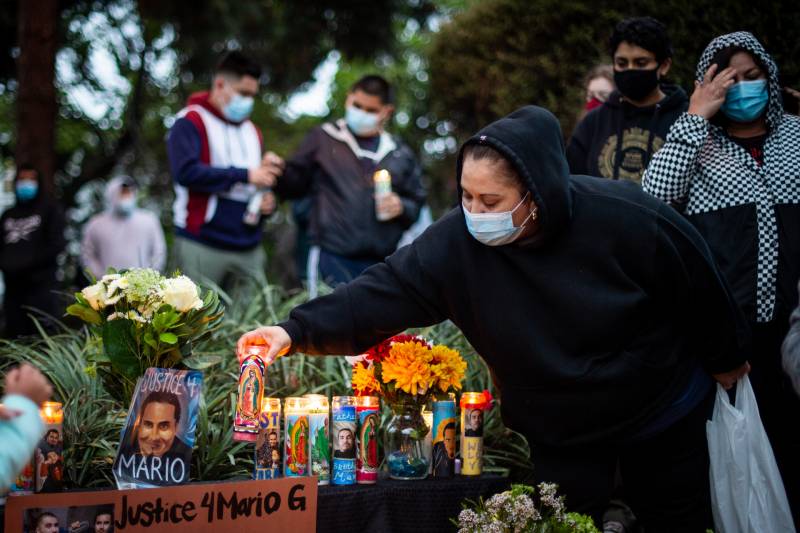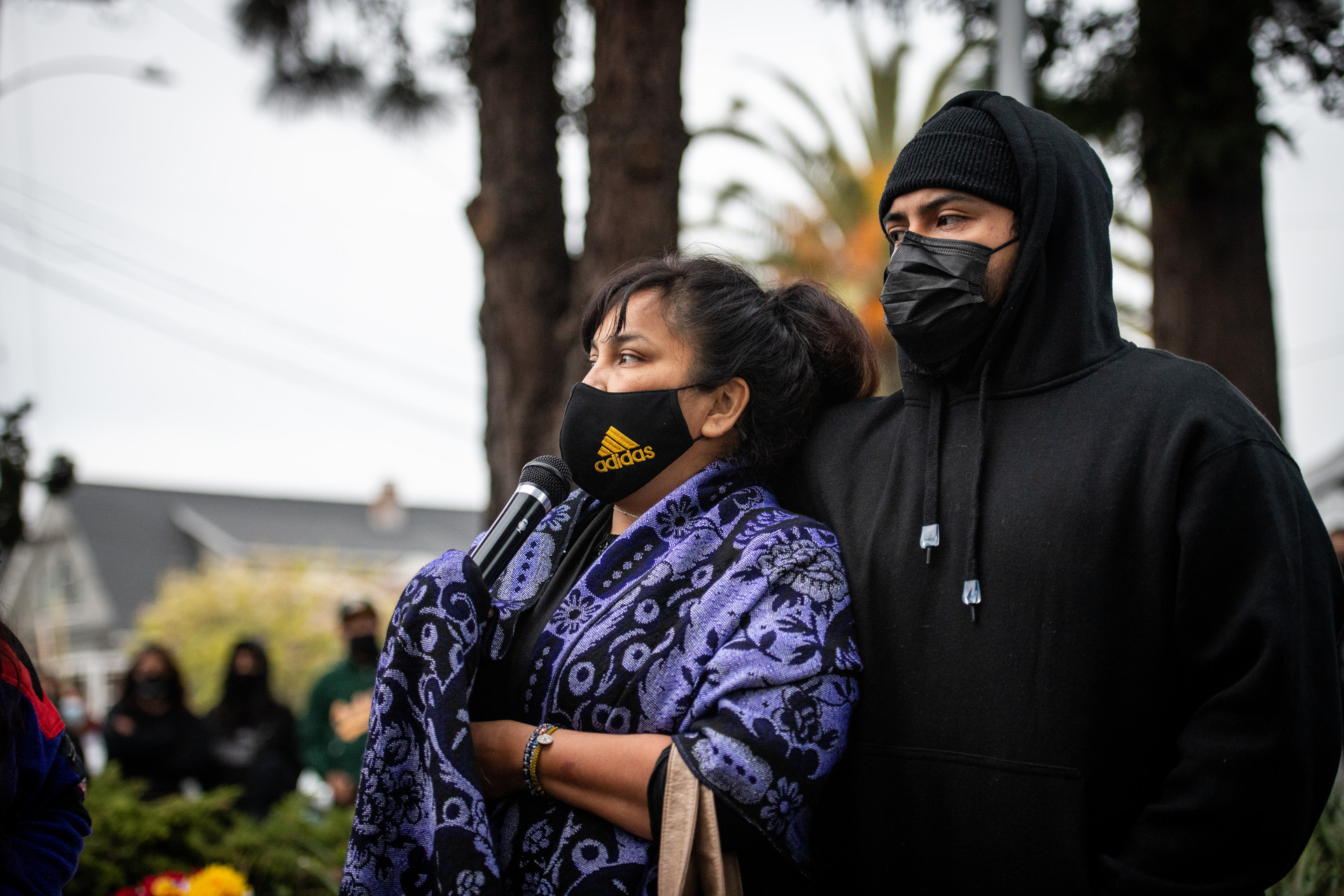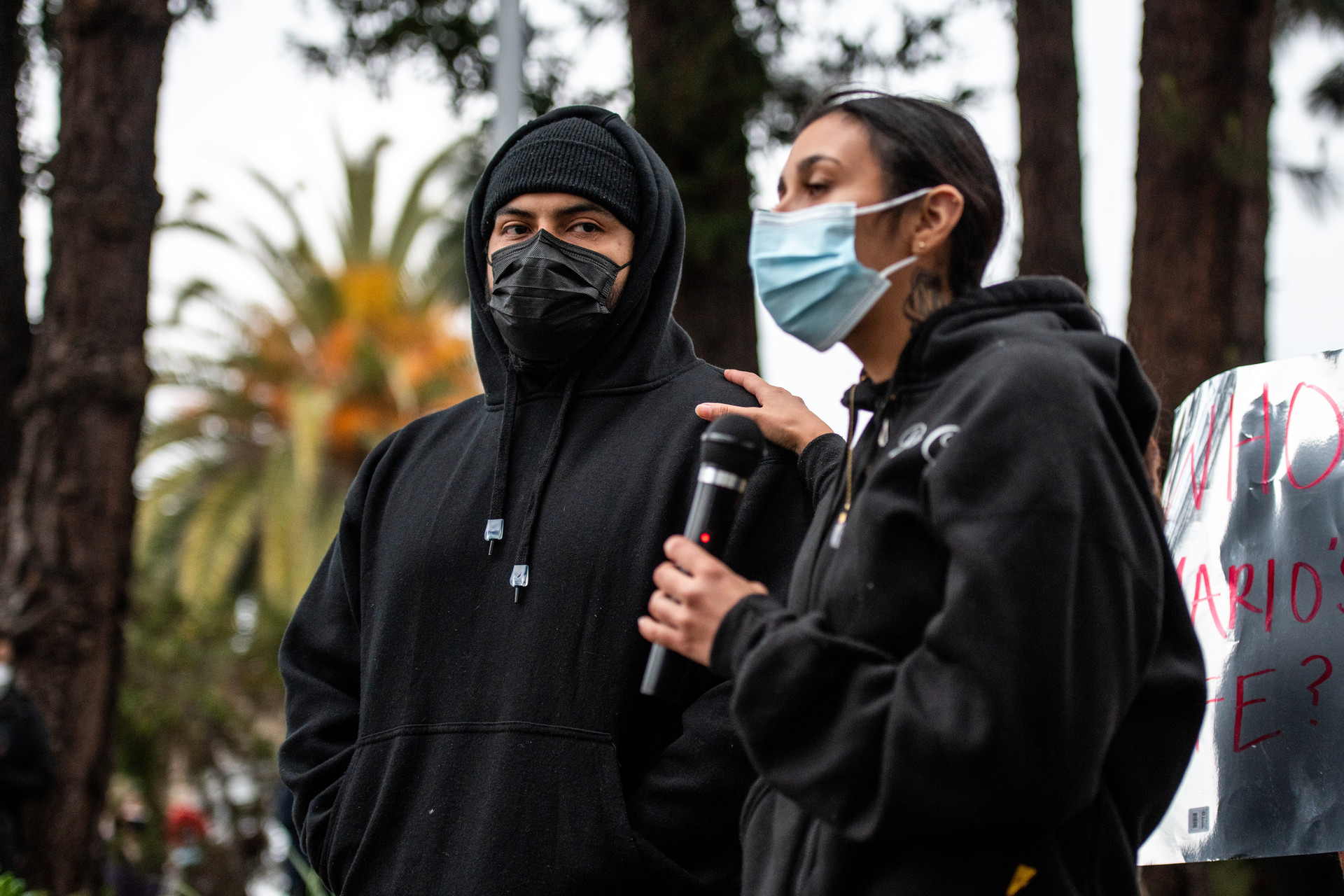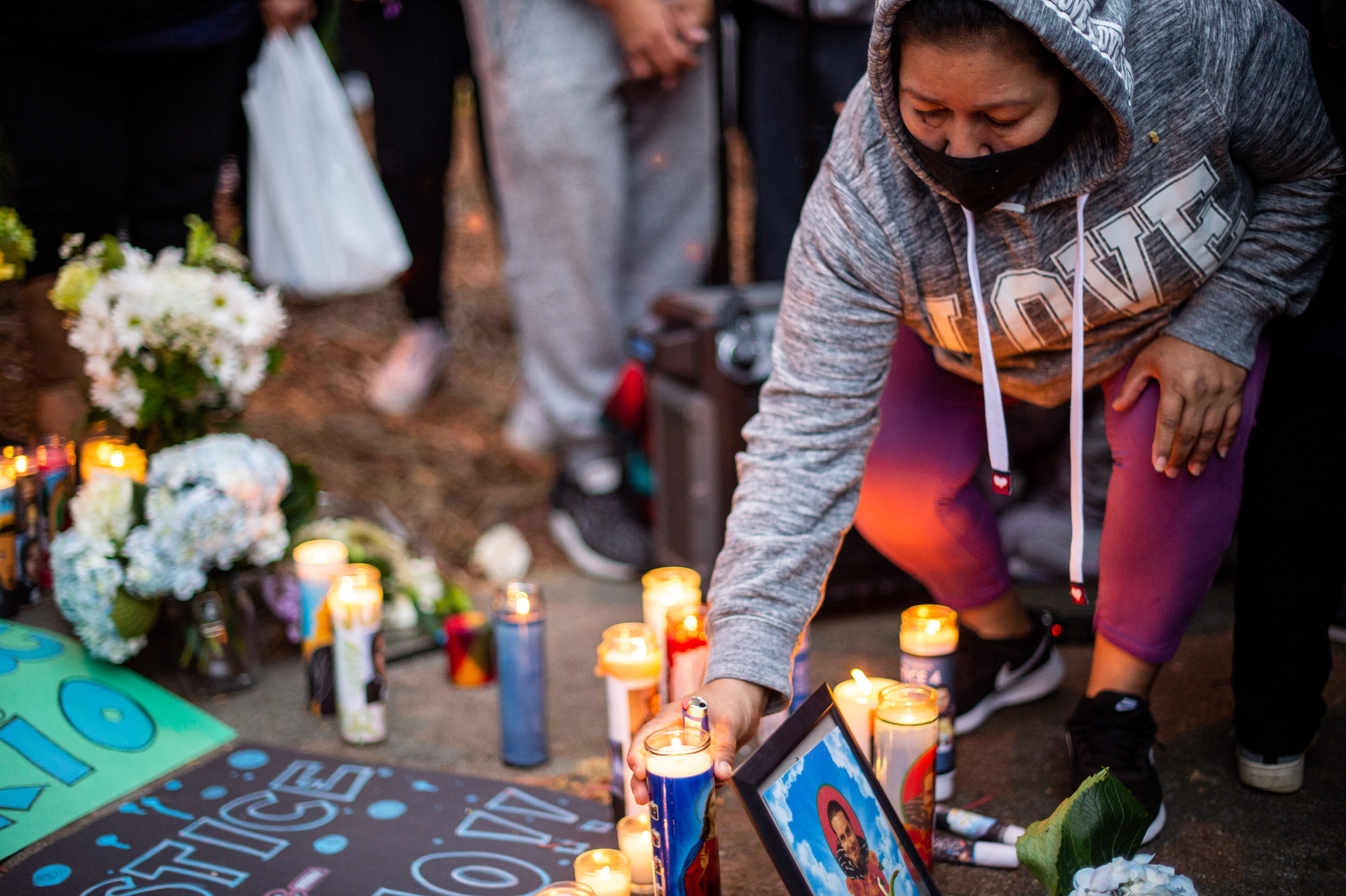During a vigil Wednesday evening in Alameda, community members and activists demanded answers in the death this week of a 26-year-old Oakland man.
Mario Gonzalez died in Alameda police custody on Monday after what police termed a “scuffle” with officers in a small park near the city’s Park Street corridor, the Alameda Police Department said in a statement Tuesday. Gonzalez, who police claimed “appeared to be under the influence and a suspect in a possible theft,” suffered an unspecified “medical emergency” after officers tried to place his hands behind his back, according to the police statement. Gonzalez was transported by Alameda Fire Department personnel to a hospital where he later died.
“We need justice because we lost someone who was indispensable to our family,” Gonzalez’s mother, Edith Arenales, said in a statement in Spanish. The police, she said, have not provided any clear information about what happened to her son.
“Mario was a noble and decent man who didn’t deserve to have his life ended in this way,” she said.
Gonzalez, she added, has a 4-year-old son and was the devoted caretaker of his 22-year-old autistic brother.

“His brother can’t eat. He can’t sleep. He keeps asking where Mario is,” Arenales told the crowd that gathered Wednesday evening, just a day after the nation reacted to the conviction of former Minneapolis police officer Derek Chauvin for the murder of George Floyd.
Speaking near a large memorial crowded with photos of Gonzalez, flowers and candles, George Galvis of Communities United for Restorative Youth Justice told attendees that the police report for Gonzalez looks “almost identical” to the one for George Floyd.




